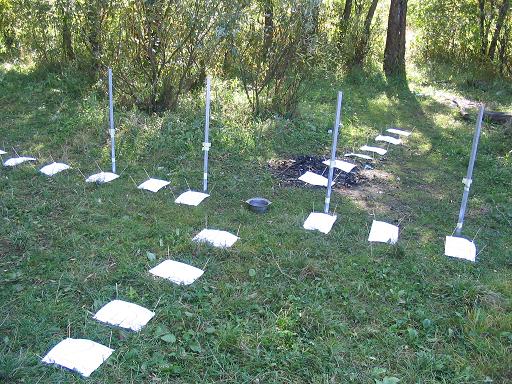
<
Serge77 - My Rocket Workshop >Consequence of Accidental Ignition
Experiment
Part 3
Summary: the task is to melt KNO3-sorbitol propellant and ignite it in hot liquid state.
Starting materials:
KNO3: reagent grade "pure for analysis". Moisture content 0.1-0.2%. It was milled with coffee mill, crystals measured 50 microns to 300 microns.
Sorbitol: pharmaceutical grade. Moisture content 0.2-0.3%. Granules measured 200 microns to 600 microns. There are also much smaller particles in the mixture.
Preparation
Experiment setup was the same as in the first test.
Four metal rods 1m height were placed at 1m distance from each other for the scale purposes.
Sheets of office paper were pinned on the ground at 0.5m distance from each other.

1 kg batch of thoroughly mixed powdered KNO3-sorbitol propellant mixture was placed in aluminum pan. Small propane burner was used as heat source, with salt bath and aluminum pan at the top.
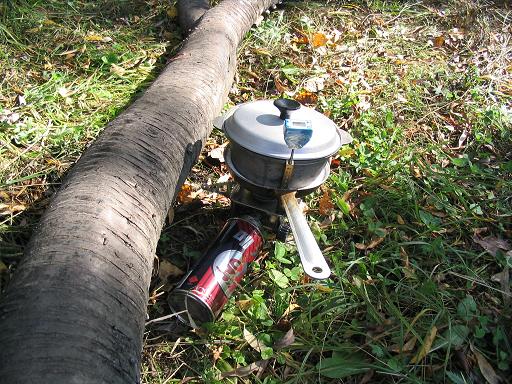
After propellant melted salt bath and aluminum pan were quickly transferred from the burner to the middle of test area. The temperature of molten propellant was 115° C, it had usual pourable consistency. Igniter was placed above the propellant surface and the RED BUTTON was pressed.
Ignition!
VIDEO, 1.8 MB
Propellant temperature 115° C.
Ambient temperature 20° C.
Propellant depth 32 mm.
Diameter of propellant surface 135 mm.
Burn time ~2.8 s.
Burn rate ~11 mm/s.
Fireball height is about 3 m.
Fireball width is about 1 m.
Consequences
There was almost no wind at the time of experiment, but scattering of burning propellant drops was asymmetric. Maximal scattering of burning drops was 1 m, but many small drops were found as far as 1.5-2 meters at all directions from the center. These small drops didn't burn through the paper, so they were cold at landing time.
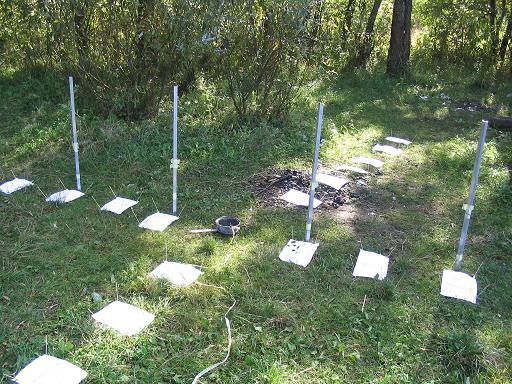
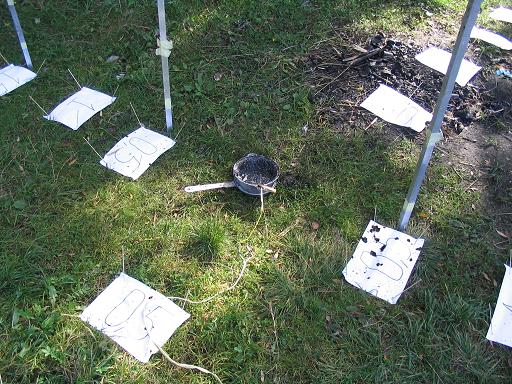
There are very little residue in the aluminum pan.
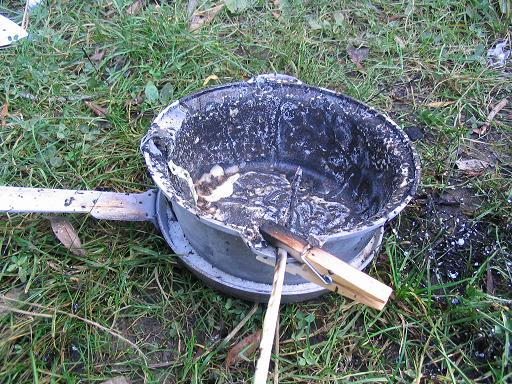


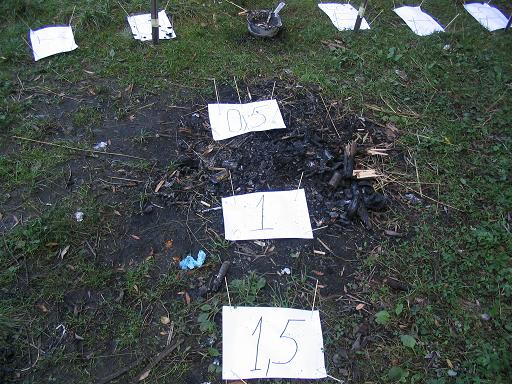
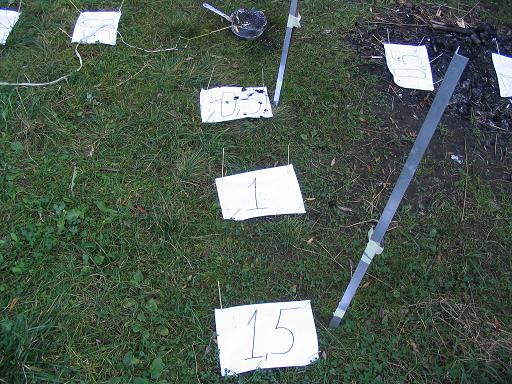
01.10.2006 Serge77